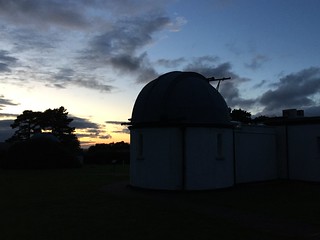As part of my MSc I'm studying social applications of GIS and I read up on the history of the UK census recently. The Office of National Statistics has a collation of census data taken over the years from its inception in 1801. It took Britain a while to get into the swing of counting people, some fearing that Biblical plagues would rain on our heads cf King David, or that if our enemies knew how many (or rather few) residents we had they'd invade. Fortunately, common sense prevailed and the need to know more about the population that they were administrating lead the government to start regular censuses.
Since then censuses (am I the only one that wants to call them 'censii'?) have occurred every 10 years excepting 1941 when Britain was busy.
The first censuses were quite elementary, compared to the booklet one now has to complete, and undertaken by parish officials or similar due to the lack of literacy from many of the population. It's interesting to note that in 1821 around half of the population was under the age of 20. Little by little the census grew: residents became responsible for filling it out themselves although, by 'resident', one meant 'men' or, as the census called them 'Head of the Family'.
One of the key columns in the census during the 19th Century was the requirement to list people's infirmaties. Initially the option was just 'deaf and/or blind' but over the decades 'imbecle/idiot' or 'lunatic' was added. Although, as the Registrar noted in 1881
“It is against human nature to expect a mother to admit her young child to be an idiot, however much she may fear this to be true. To acknowledge the fact is to abandon all hope.”
Also in 1881 a woman creatively "gave her title as Maid of Allwork, her occupation as slave and a handicap as scarcity of money."
In 1911 census highlights included the suffragette Emily Wilding Davison hiding in a broom cupboard in the House of Commons, and the census confirmed her residence as such.
One man "...described an occupant of his house as ‘Peter Tabby’ and lists his occupation as ‘mouser’. His nationality is ‘Persian’. The enumerator has crossed out the entry with red ink and noted sternly: ‘This is a cat.’"
Throughout the first half of the 20th Century the census still asked for the Head and details of his wife ("how many times had she been married?" - no idea why that question wasn't relevant for men). No, it doesn't irk me...
In 1971 it appears to be a little more neutral with the questions being pretty generic for both sexes (although still the 'Head' and 'wife'). And, at last!, in 1981, there is no 'Head' just person 1 and person 2 etc. 1991 would have been the first census I completed and, if I'd got there before my husband, I've no doubt I'd have been person 1. By this stage the census form had grown to 12 pages.
The length dropped to 8 pages for 2001 but was a bumper 24 in 2011. I wonder what will be in the 2021 one?
Since then censuses (am I the only one that wants to call them 'censii'?) have occurred every 10 years excepting 1941 when Britain was busy.
The first censuses were quite elementary, compared to the booklet one now has to complete, and undertaken by parish officials or similar due to the lack of literacy from many of the population. It's interesting to note that in 1821 around half of the population was under the age of 20. Little by little the census grew: residents became responsible for filling it out themselves although, by 'resident', one meant 'men' or, as the census called them 'Head of the Family'.
One of the key columns in the census during the 19th Century was the requirement to list people's infirmaties. Initially the option was just 'deaf and/or blind' but over the decades 'imbecle/idiot' or 'lunatic' was added. Although, as the Registrar noted in 1881
“It is against human nature to expect a mother to admit her young child to be an idiot, however much she may fear this to be true. To acknowledge the fact is to abandon all hope.”
Also in 1881 a woman creatively "gave her title as Maid of Allwork, her occupation as slave and a handicap as scarcity of money."
In 1911 census highlights included the suffragette Emily Wilding Davison hiding in a broom cupboard in the House of Commons, and the census confirmed her residence as such.
One man "...described an occupant of his house as ‘Peter Tabby’ and lists his occupation as ‘mouser’. His nationality is ‘Persian’. The enumerator has crossed out the entry with red ink and noted sternly: ‘This is a cat.’"
Throughout the first half of the 20th Century the census still asked for the Head and details of his wife ("how many times had she been married?" - no idea why that question wasn't relevant for men). No, it doesn't irk me...
In 1971 it appears to be a little more neutral with the questions being pretty generic for both sexes (although still the 'Head' and 'wife'). And, at last!, in 1981, there is no 'Head' just person 1 and person 2 etc. 1991 would have been the first census I completed and, if I'd got there before my husband, I've no doubt I'd have been person 1. By this stage the census form had grown to 12 pages.
The length dropped to 8 pages for 2001 but was a bumper 24 in 2011. I wonder what will be in the 2021 one?



